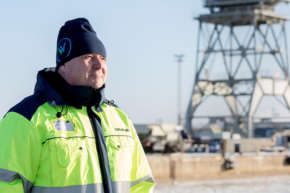The fastest sea route for exports starts in Turku
Finland’s economic well-being is based on foreign trade. Imports account for around 40 per cent of our gross trade and exports for another 40 per cent. Due to Finland’s geographic location, most of the foreign trade transports are carried by sea. In 2015, 77 per cent of Finland’s imports and as much as 90 per cent of exports measured in tonnes were transported by sea.
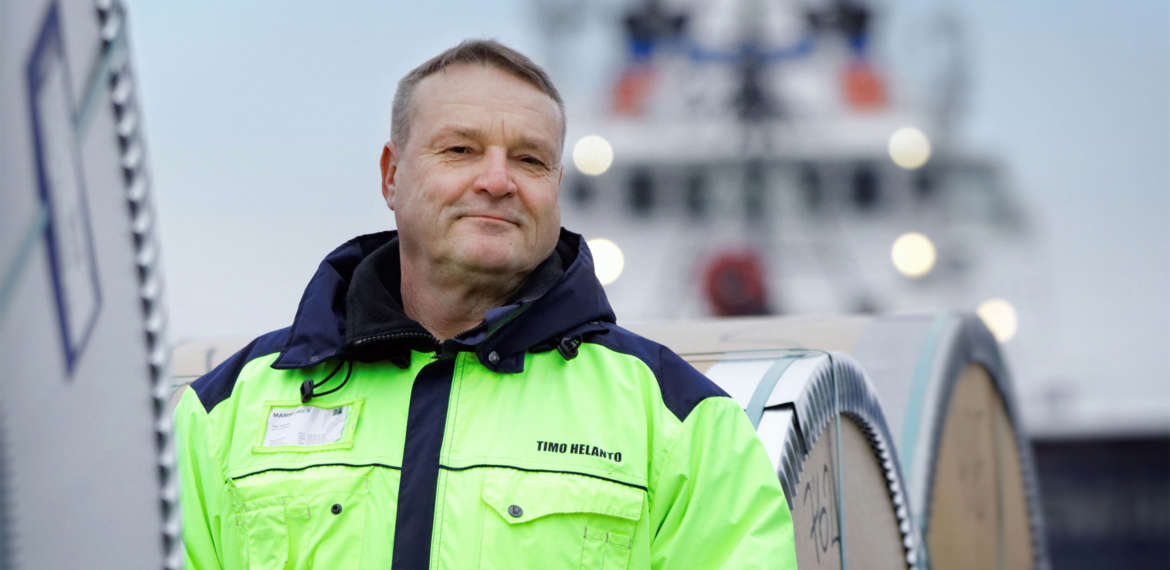
Due to Finland’s location, efficient logistics is one of the key factors for the competitiveness of exports. Succeeding on global markets calls for speed and precision, so that the products can be delivered to the customers as per the agreed schedule. In the Port of Turku, all players are committed to developing their services according to the requirements of logistics. As a result, a growing share of the products of Finnish industry is exported via the Port of Turku.
Regular connections to the key trading partner countries
Last year, exports via the Port of Turku increased by around 11.5 per cent on the previous year. There are a number of reasons for the growth, the most important of which is the fast and regular liner traffic to the key export countries of the Finnish industry.
As for the exports of goods, the Port of Turku has increased its share of project exports of the heavy industry and liner traffic to Germany in particular. The development of the latter has been speeded up by the increase in the number of Finnlines’ weekly departures and the growth of the cargo capacity. Capacity for the growing exports is also offered by the other routes to Continental Europe and England which connect Turku to the key ocean lines.
In unit cargo, Turku has a solid position as the centre for Finland’s Scandinavian traffic. The Port offers the fastest sea route to Sweden which is used annually by around 110 000 trucks and trailers. The service between Turku and Stockholm is complemented by regular ship connections to Denmark, Norway and the Baltic States.
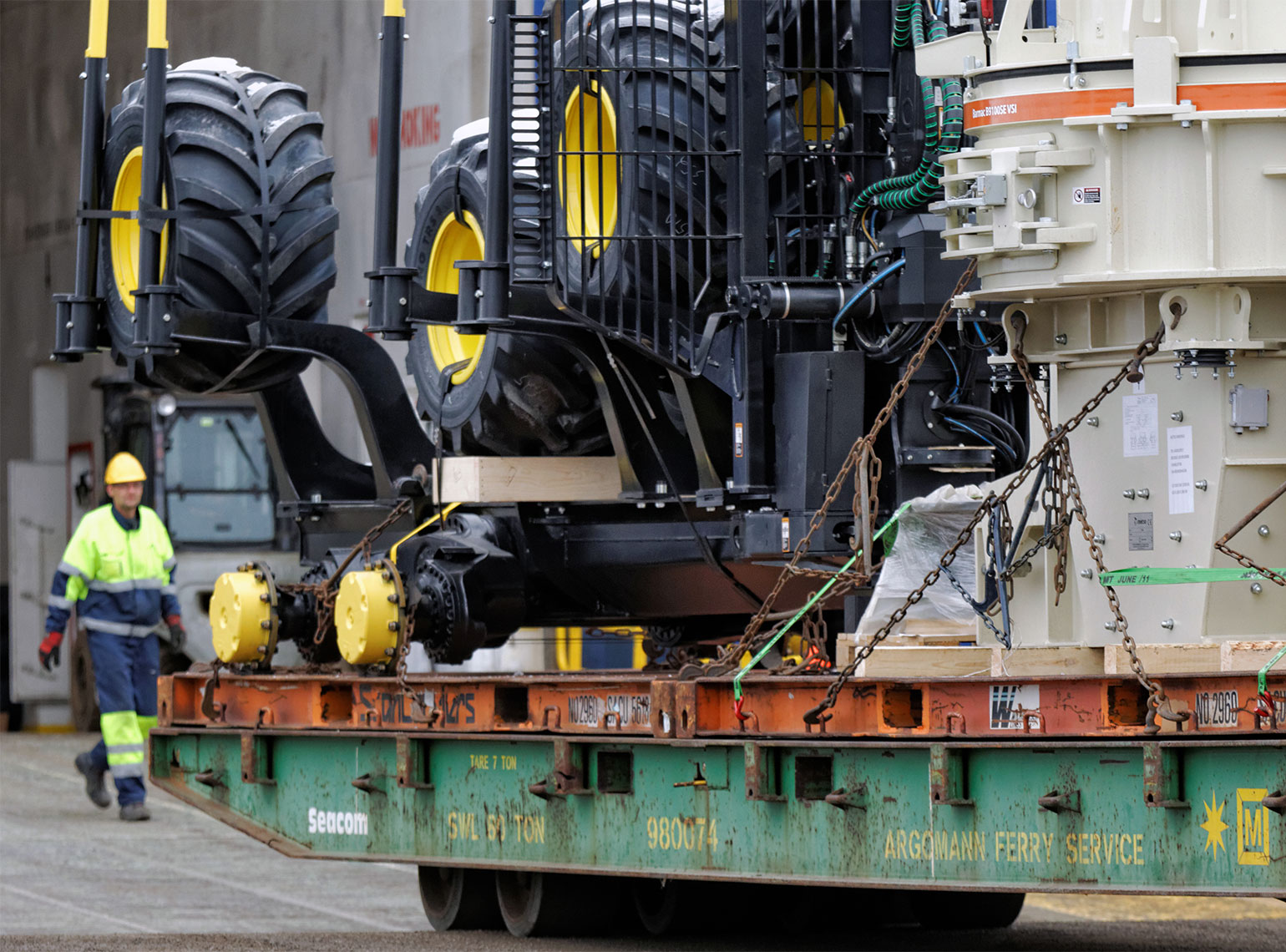
Liner traffic leans on convenient and reliable schedules
The importance of speed to exports is also emphasised by the representatives of Mann Lines Oy which operates traffic between Turku and Harwich. According to both Timo Helanto, General Manager and David Symes, Director of Operations, the speed of transports is due to a number of factors.
”In short sea traffic the speed is based on scheduling of traffic and the frequency of ship departures. In Turku both are optimal, especially in terms of unit cargo destined to Scandinavia and Germany. As there is also plenty of cargo capacity for truck and trailer transports, room can be flexibly found for export transports even at short notice”, Timo Helanto says.
According to David Symes, time is also very important to the Finnish basic industry. To achieve the customers’ trust the shipments need to depart and arrive as promised. The requirement of delivery performance is absolute throughout the transport chain.
”The products of many customers of Mann Lines are shipped all the way to Asia and the Americas. For those industrial companies our connections to the ocean lines departing from Bremerhaven are an important element of the logistics package. The transport schedules need to fit together so that the valuable cargo need not wait in the intermediate port, but the transfer time from feeder traffic to the overseas lines remains as short as possible. Regarding Mann Lines, we have managed to synchronise our own schedules with the production rate of our customers and the ocean lines”, David Symes says.
Good land connections and short turnaround times
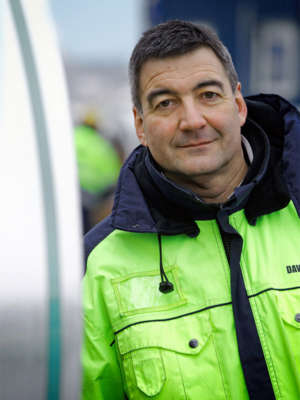
There are several shipping companies operating liner traffic from the Port of Turku whose schedules allow export industry companies to choose the solution best suited to the transport need at hand. That is also supported by the location of the Port, thanks to which the export goods coming from further away can be shipped in the same evening, even if the loading at the factory takes place at close of business.
”The Port of Turku also offers excellent connections for inland transports of the export industry. The road connections to the key Finnish industrial regions and the Helsinki region are fast and uncongested, mostly of motorway standard. The needs of heavy industry in particular are also served by the railway to the Port with the opportunity to load and unload trains indoors, sheltered from the weather”, Timo Helanto reminds.
In addition to good land connections, Mr Helanto mentions short turnaround times as one of the Port of Turku’s strengths. There’s no need to wait for loading and unloading in Turku, which speeds up the whole transport chain. Thanks to a sufficient number of berths and efficient cargo handling services, vessel calls also run smoothly.
Services on quays are enhanced by professional stevedoring
Cargo handling services in the Port of Turku are provided by the leading companies in the field whose experienced professionals take care of loading and unloading of vessels carefully and safely. Mann Lines’ partner is port operator Finnsteve.
”Seamless co-operation with the stevedoring company ensures that our ship will depart on schedule. The departing cargo units are compiled in advance before the arrival of the ship, and the right number of men and equipment is ready on the quay, so that they can start work as soon as the ship has been moored. Traffic guidance is demanding, as trailers and roll trailers go in and out of the ship. By reading the ship’s cargo plan you need to identify what part of the cargo will be unloaded and what will possibly continue to the next port. Thanks to efficient co-operation, the ships need not stay in port very long, which adds to the cost-efficiency of transports”, David Symes emphasises.
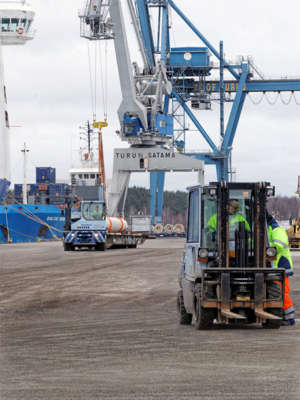
With a view to the speed of cargo handling, the Port of Turku has invested in the development of crane operations. During a project completed in spring 2017, the Port’s container and multi-purpose cranes went through comprehensive basic repairs. For example, the crane logic was modernised to meet the current requirements, which ensures smooth flow of crane operations and speeds up the lifting operations. The crane capacity has been dimensioned to meet the requirements of heavy industry up to 48 tonnes.
Renewed stock of vessels opens up new opportunities
The cargo capacity of the route also plays a role in ensuring the fast flow of goods. The capacity of the liner traffic from Turku has grown both due to increased number of departures and the renewal of the stock of vessels.
During 2017, e.g. Baltic Line and Mann Lines will renew their stock of vessels. The fist new ship in operation is Baltic Line’s m/v Baltic Madonna. The new vessel sails from Turku to Norway in alternating weeks with m/v Mini Star which is also being replaced by a new vessel during the spring. Furthermore, Mann Lines will introduce a new ship on its route from Turku via Bremerhaven to Harwich in the summer.
”Built at the Visentini shipyard in Italy, the ship is a ro-ro vessel equipped with a stern gate and its ice class is 1A. The cargo capacity on board is 2,800 lane metres plus separate car decks”, Timo Helanto, General Manager of Mann Lines, describes the new ship.
Viking Line, which also serves unit cargo transports between Turku and Stockholm, announced in late 2016 that it has signed a letter of intent on ordering a new vessel. The new building project was preceded by planning work of several years related to the EU’s Motorways of the Seas project. The intention is to create a new kind of a ro-ro passenger vessel concept that responds to the needs of both cargo and passenger traffic, taking into account the sensitive environment of the Baltic Sea. Due for completion in spring 2020, the new ship will be 218 metres long and the length of its cargo space will be 1,500 metres.
Text Kari Ahonen
Photos Markku Koivumäki
Mann Lines Ltd
A sea transport company that offers its customers efficient connections between the key ports in the Baltic Sea region and northern Central Europe. In Finland, the home port of Mann Lines is Turku from where the company sails weekly to Germany, England and Estonia. The British-owned shipping company is part of Mann Group which also provides a wide range of forwarding, warehousing and distribution services for its customers in dif-ferent ports.
Mann Lines has a warehouse with a floor area of 5,000 square metres in the Port of Turku.

